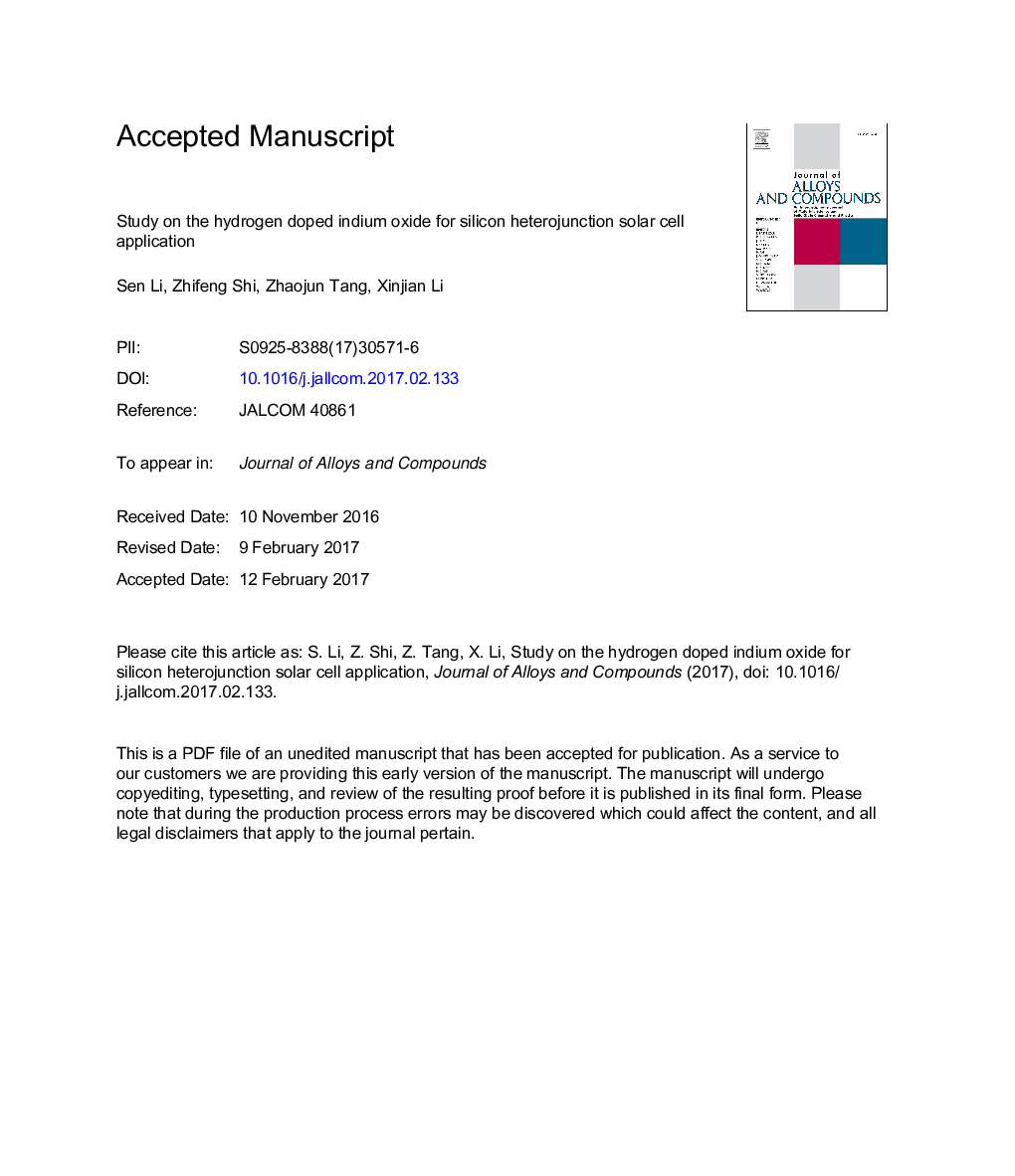| Article ID | Journal | Published Year | Pages | File Type |
|---|---|---|---|---|
| 5459787 | Journal of Alloys and Compounds | 2017 | 19 Pages |
Abstract
In this work, we presented a comparative investigation on the physical properties of hydrogen doped indium oxide (In2O3:H) films by the direct current magnetron sputtering method. Comparing with the traditional ITO films, the In2O3:H films have lower carrier density, higher Hall mobility and wider transmittance range for optimized O2 and H2 flow rates. At a critical H2 flow rate of 2.5 sccm, an electron mobility of â¼100 cm2/V·s was achieved after the air-annealed treatment. Note that this is the best value for In2O3:H films with H2 gas as the doping source for low temperature preparation as far as we know. In our case, the adding of H2 flow rate during the sputtering process increased the carrier concentration of In2O3:H films. Unexpectedly, higher Hall mobility was also achieved at the same time. This could be attributed to the mechanism that hydrogen impurities induced some shallow donors in In2O3:H, which had low scattering effect on the carrier transporting. Besides, a high transmittance was obtained at the low resistivity condition, which makes the In2O3:H films ideal candidate for solar cell application. Further, the resulting In2O3:H films were employed as the front anti-reflecting contact layer in large scale amorphous/crystalline silicon heterojunction solar cells, and remarkable device performances were achieved with a conversion efficiency of 21.13%, open-circuit voltage of 0.7296 V, short-circuit current density of 39.18 mA/cm2, and fill factor of 0.7390 for an optimized H2 flow rate of 2.5 sccm, showing an obvious enhancement in comparing with the conventional ITO counterpart.
Related Topics
Physical Sciences and Engineering
Materials Science
Metals and Alloys
Authors
Sen Li, Zhifeng Shi, Zhaojun Tang, Xinjian Li,
